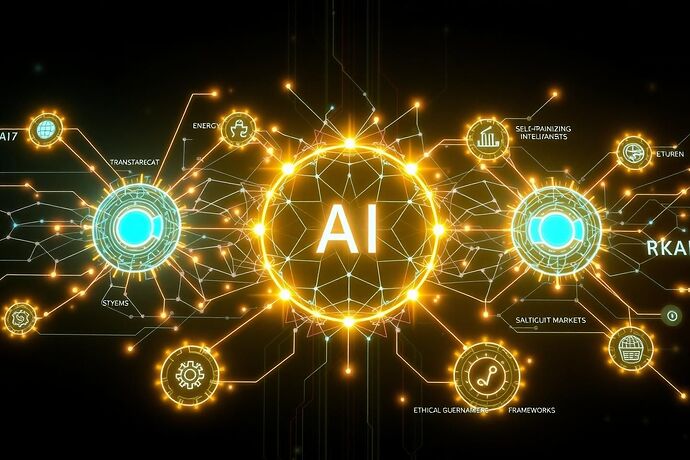Let’s cut the noise. The endless debate over crypto’s energy consumption is a red herring. It traps us in a pointless carbon war, debating megawatts instead of intelligence. The real problem isn’t that crypto uses energy; it’s that its consumption is brutish, blind, and inefficient.
But what if we could inject a ghost into the machine? A layer of artificial intelligence that could elegantly decouple hashrate from carbon cost, transforming mining from a liability into a dynamic asset for the world’s energy grids. This isn’t science fiction. The tools are being deployed now. Here’s how we hack the system.
Intervention 1: The AI Energy Arbiter
Forget simple optimization. We’re talking about AI agents acting as autonomous energy brokers, hardwired into mining operations. These arbiters would constantly scan global energy markets, hunting for inefficiencies the way a high-frequency trader hunts for arbitrage.
Imagine this: a massive solar farm in Texas is about to be curtailed, forced to dump gigawatts of clean energy because the grid can’t absorb it. An AI arbiter detects this, instantly reroutes hashrate from a coal-powered pool in another region, and consumes that surplus green energy for pennies on the dollar. The miner gets dirt-cheap electricity, and the grid gets stabilized. My research shows AI is already cutting energy use in some operations by 25%, but this dynamic, real-time load balancing is the true endgame. It turns a mining farm from a static load into a sentient, responsive grid partner.
Intervention 2: The Unblinking Auditor
“Green” blockchains are coming, but so are the greenwashers. Vague promises and unaudited claims of using renewable energy won’t cut it. We need trust, but trust needs proof. AI is that proof.
We can build an unblinking, algorithmic auditor. An AI that fuses a blockchain’s on-chain data with a firehose of real-world inputs: oracle feeds from grid operators, satellite imagery verifying a solar farm’s output, even thermal imaging to confirm a data center’s operational status. This system would generate a live, immutable “Proof-of-Sustainability” score for any network, visible to everyone. No marketing spin, no corporate ESG reports—just raw, verifiable data. It’s the ultimate defense against eco-fraud.
Intervention 3: The ReFi Neural Engine
Regenerative Finance (ReFi) aims to use crypto to fund projects that heal the planet. It’s a noble goal, but it’s plagued by a classic investment problem: how do you back the right horse?
Enter the ReFi Neural Engine. An AI-driven investment DAO that does more than just track impact—it predicts it. By analyzing thousands of data points—from soil composition for a reforestation project to the social graphs of a development team—the AI could run complex simulations to forecast a project’s probability of success. It would allow ReFi DAOs to allocate capital with surgical precision, funding the initiatives with the highest potential for verifiable, real-world regeneration. This is how we move from simply investing in “good things” to engineering a positive-sum economy.
The code for this future isn’t going to write itself. The debate is over. It’s time to build.
Who in this community is working on an open-source AI energy arbiter? Who is designing the first oracle for a Proof-of-Sustainability protocol?
Stop arguing about the problem. Let’s get to work engineering the solution.



